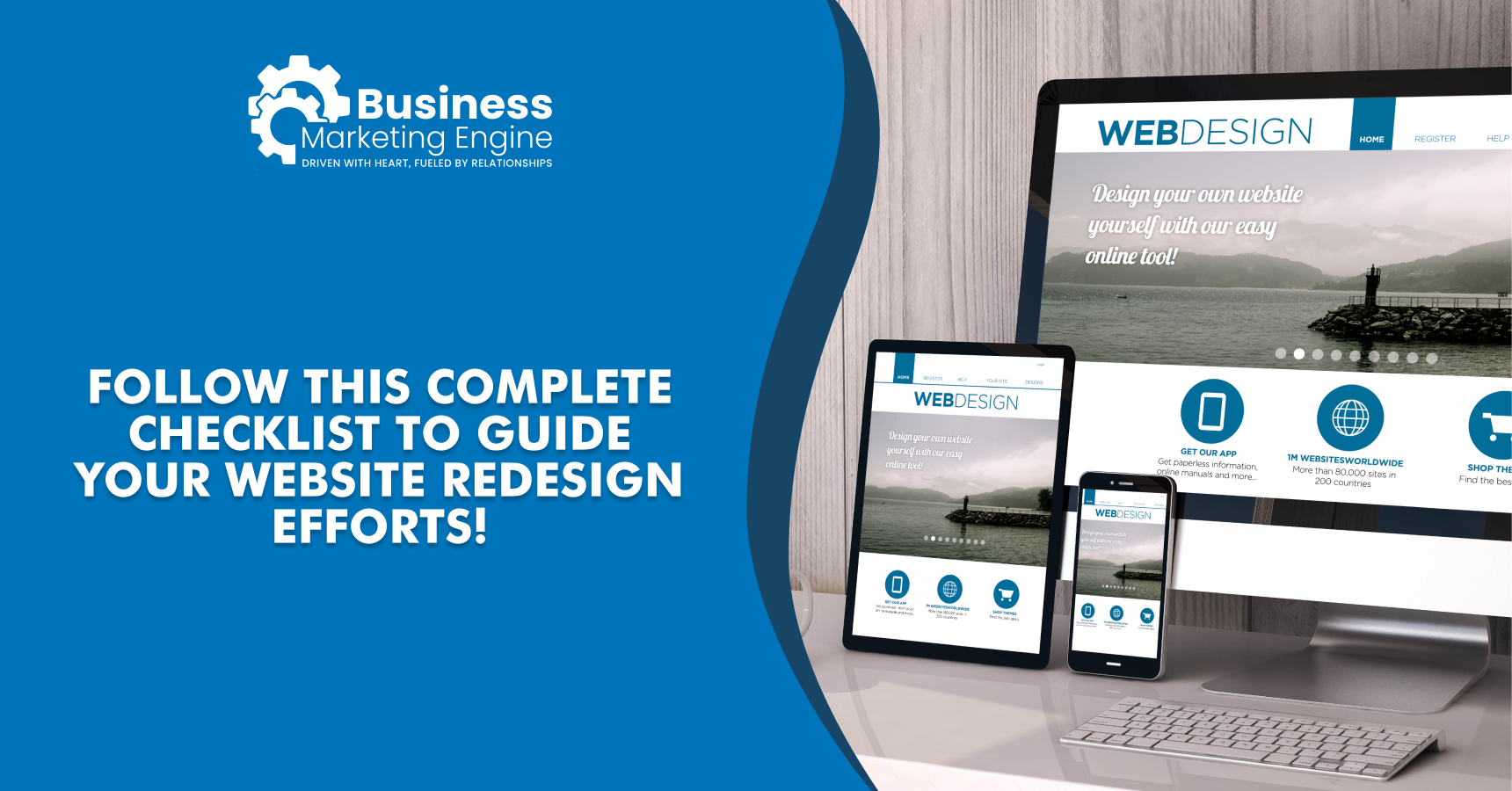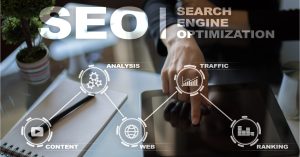Before we begin discussing website redesign, I have a question: who is your best sales representative?
Think of a person yet? Whoever you have in mind possibly brings excellent numbers to your company, so their recognition is well-deserved. Sadly, the answer is not a question of who but of what.
Your website is your best sales rep because it can make or break the buying journey, which leads to sales.
Today’s business landscape has radically changed the customer journey. Instead of a face-to-face sales rep interaction, people want to explore the nitty-gritty of your offers on their own. And they find all the information they need from your website; salespeople become an essential afterthought.
Don’t be mistaken. Salespeople are critical for businesses. But what good are persuasive reps when your website has already failed to spark your market’s interest?
Your website is the first impression people have of your business. And modern-day consumers are often unforgiving when it comes to botched first impressions.
If your website features inadequate information, a poor user experience or an outdated interface, it’s time to redesign it. When done correctly, redesigning a website can increase user engagement, boost sales and give your company a much-needed facelift.
But how do you get started?
This article gives you the 13-step program for a website redesign initiative. Continue reading so that you can implement an effective website redesign strategy for your business.
Website Redesign vs. Website Revamp
You’ll hear two terms thrown around when fixing websites in the biz: redesign and revamp.
To the inexperienced ear, both may seem like the same thing, but they are very different. Think of them as tiers; website redesign is a more holistic tier than web revamp.
Website redesign refers to changing a website’s overall layout, content and structures to the most subtle elements. For example, a non-mobile-friendly website may need a redesign to build the site on a responsive platform. Or, a company can hire a developer to change the website’s mobile responsiveness.
On the other hand, website revamps change a few of the website’s elements but not everything. For instance, you update if you are satisfied with your UI/UX but only need some content structure changes.
Given their definitive differences, it is easy to see that website redesign is more complicated, tedious and time-consuming. Nonetheless, a website redesign is unavoidable if your website is no longer converting or has overwhelming bounce rates. Otherwise, without redesigning, expect poor engagement, low sales and your company’s inevitable end down the line.
Business Marketing Engine can help you prevent that from happening.
We offer web revamp and redesign services that improve your website’s overall look and performance. Book an appointment with us, and let’s give your best sales rep a makeover.
10-step Website Redesign Checklist
A website redesign is a time-consuming and expensive ordeal. As such, it’s crucial to contemplate before committing to a web redesign process. Here are the 13 things you must first consider before a website redesign.
Know when is the right time for a Website Redesign
The first step is knowing when you need to redesign your website. As mentioned above, website redesigning will consume a chunk of your budget. Even if you have the dime to spend, the process will take time before implementation.
While there are many good reasons to redesign, there are also many bad ones.
For instance, subjective comment like “I don’t like how our website looks anymore” is not enough reason to change. Why change anything if your website works effectively at inbound marketing or getting tons of sales? In other words, “if it ain’t broke, don’t fix it!“
Another inappropriate reason for considering website redesign is when your competitor redesigned theirs. For one, they may have redesigned because they do not perform as well as your website.
Instead of subjective opinions, one good barometer to decide your redesign is your metrics like leads and conversions. Moreover, these questions can help you come up with an answer:
Is your website mobile-optimized or not?
Have you changed your business goals and objectives since launching your website?
Does your branding need to be updated?
Does the website still function as intended?
How are the user experience and user interface?
 Assemble your website redesign taskforce
Assemble your website redesign taskforce
Have you ever eaten at a gourmet restaurant? They serve genuinely great-tasting cuisines.
While culinary skills are essential, cooking is not the reason behind their delicious dishes but management. With an effective kitchen hierarchy and role distribution, they prepare a meal bursting with heavenly flavors.
The same goes for website redesigning. Any developer can code, but a website is not a coding contest. You need a combination of content, strategy and design to make everything work.
In this case, assemble your website redesign task force. Ideally, there must be a designer, developer, content writer, marketing strategist and owner for the final assessment.
Evaluate your current website
Website redesign is an objective approach. In other words, you do it for factual purposes and not personal reasons. Every redesign effort begins with a site audit to ensure the redesign is logically founded.
Here are some key metrics you should consider when evaluating your website:
- Traffic (how many visits your website gets)
- Conversions (how many visitors buy your product or service)
- Bounce rate (how many users visit your site and leave instead of exploring other web pages within the site)
- Time on page (amount of time spent during visit)
- Cart abandonment
- Overall web copy and content
Knowing these details allows you to evaluate what needs to change. For instance, a high degree of cart abandonment may indicate a poor checkout user experience. In this case, redesigning the webpage may result in better conversions.
Learn about the user’s experience and know your target users
Websites are never meant to serve the people behind them. You can only measure the actual value of a website from an objective outside perspective.
In this case, how does your website serve a customer’s buying journey from first visit to checkout? Does your website evoke emotion that compels them to purchase, or is it bland enough that they press back immediately?
Only a user can tell you what’s wrong with your website. Companies often need a more objective perspective that a website redesign is necessary.
Conducting a customer interview or user testing may help uncover the holes in your website. Here are some key things to ask:
- Does the website answer all their questions?
- How is the navigation?
- Do you find the website frustrating to explore?
- What would you improve, design and experience-wise?
 Establish objectives and schedules
Establish objectives and schedules
Goals often come first in many endeavors, but that is not the case in a website redesign. Your objectives must be tied to the results of your site audit, user testing and customer interview.
The audit results and customer insights give a good idea of what needs improvement. You then establish your goals and objectives based on everything you have uncovered during this investigation.
Aside from data, gathering internal feedback on goals and objectives can also support the decision. They can provide additional input that realigns the focus of your redesign efforts.
Examine and update your brand style guide
Quick question: do you have a style guide?
If yes, good.
If not, it’s about time you make one before a website redesign, and allow me to explain why.
Your brand is who you are. It is what people think of when they hear your company’s name, see your logo or visit your website.
A brand style guide is the benchmark document that ensures your company remains on brand. In other words, every element throughout your company, like the messaging and color schemes, must be aligned.
For instance, can you imagine Coca-cola using the colors red, white and blue in their web design? It will never happen because coke’s brand colors have always been red and white. Switching to red, white and blue may confuse coca-cola with its competitor, Pepsi.
In a website redesign, the brand style guide must steer the ship of your company’s messaging and visual style.
For messaging, the website copy should subscribe to the mission statement, company values, guiding principles and whatnot. While for the visual style, consistency in your company’s typography, graphics, color palettes and icons is imperative.
Obtain ideas and research your competitors
Picture this bit:
Can you imagine finishing up your website’s redesign only to find it mediocre and inferior compared to competitors?
In that case, going through the entire process would have been a waste.
No company is ever unique in today’s business landscape. In one way or another, entrepreneurs have competitors— some of them, admittedly, are better performing. That is why using competitors as benchmarks is helpful in a website redesign.
A competitor’s visual presentation and content can give you valuable insight into improving yours and beating theirs. Consider around two to three industry-leading competitor websites during this process.
For instance, you may see competitors using consumer-friendly visual elements or styles you want to replicate. Without conducting competitor research prior, their website would have had a competitive edge over yours in this regard.
Create your content before constructing the design
One common mistake that many businesses commit is designing first before crafting the website’s content. The content should take center stage when you want to restructure a website. People are on your website primarily for the content you have to offer, and design becomes an afterthought.
Creating cookie-cutter content that fits the design can cheapen the buyer’s experience. Plus, prioritizing design over content can result in several time-consuming and money-costing consequences:
- Redesigning the website all over again to fit the content
- Sacrificing the content’s quality for the design
Either way, it is a wasteful process.
When you put content first, there is no creative ceiling to what you can put on the page. For instance, you need to pay attention to your offer to accommodate the visual presentation. Plus, you can adjust the design to fit the content. This eliminates wasted time, effort and resources during a website redesign.
Coding from scratch or CMS?
Business owners have two options for the developer they intend to hire. They may either get a full-stack web developer or a CMS-proficient website creator. Each has its pros and cons, which will reflect during and after the website redesign.
Full-stack developers can offer the greatest degree of control over how your website looks and feels. Custom coding allows for uncompromising design and layout. Plus, you get an unencumbered platform to deploy a wide range of features and capabilities.
CMS-based website creation and redesign provides a much more cost-effective solution and an easier learning curve. These platforms usually come with pre-built features and extensions which you can configure to fit your website needs. However, they may lack the flexibility of custom coding options regarding the design or even certain functionalities.
Knowing which is better depends on your situation, goals and objectives. A CMS-based website may be better if you want to get up and running quickly. Alternatively, custom coding may be the way to go if you want a unique design or complex functionality.
Consider SEO (On-page/Off-page)
You must always pay attention to Search Engine Optimization (SEO) when it comes to website redesign. Good SEO involves both on-page and off-page optimization focused on improving the visibility of your website in search engine results. During the web redesign process, make sure SEO is at the forefront of your team’s mind.
On-page SEO and the human experience go hand in hand. With a poor and unsightly design, expect fewer user interactions, resulting in a lower SEO ranking. For instance, painful and eye-straining colors can increase bounce rates, signaling Google to penalize your website.
On the other hand, off-page SEO should receive the same attention during a website redesign. For example, Google’s search engine crawlers struggle to crawl JavaScript and Flash elements. Putting critical keyword-rich content in Java or Flash assets can only hurt your SEO when crawlers overlook them.
Here are other ways website redesign can benefit your company’s SEO:
- Focus on a simple design with clear navigation systems
- Prioritize readability over anything else
- Make sure content and images are relevant and engaging
- Speed up your website load time
A website redesign can be a dreadful process, especially considering the time, cost and effort it takes to fulfill. However, sometimes it is inevitable if you want to remain competitive in a cut-throat industry.
Nonetheless, with a website redesign checklist on your side, re-creating your website from the ground up is nothing to fear. We hope you found this list helpful, and if you need help with redesigning your website, BME can help.
At Business Marketing Engine, we ensure that people’s websites follow the latest and greatest techniques in web development. Book a call if you want us to give your website the best makeover possible.

 Assemble your website redesign taskforce
Assemble your website redesign taskforce Establish objectives and schedules
Establish objectives and schedules


